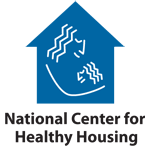Share
Related Topics
Tagged As
As we make homes tighter, we need to provide ventilation, which costs energy. One way to reduce the energy impact of that ventilation is to use an air-to-air heat recovery system. A heat recovery ventilator (HRV) recovers sensible heat by exchanging heat between incoming and outgoing airstreams. An energy recovery ventilator (ERV) is similar to an HRV but also allows moisture to be exchanged.
We do not strictly control Google ad content. If you believe any Google ad is inappropriate, please email us directly here.
ERVs make a lot of sense both in hot-humid climates and in cold climates. In the former they reduce the dehumidification load by keeping excess moisture out; in the latter they reduce the humidification load by keeping moisture in. Nevertheless, there are reasons why one may wish to be cautious in using ERVs.
ERVs do not make a lot of sense when you want to exhaust excess indoor moisture and replace it with drier outdoor air. Many codes (and ASHRAE Standard 62.2) require kitchen and/or bath exhaust to allow the removal of excess moisture. Running these exhausts through an ERV would recover this moisture and dump it back in the house. Rarely is this what one wants to do. Yet there is a growing segment of building professionals who are using ERVs in exactly this way. It is not clear whether this use of an ERV meets the requirement of exhaust, but it does seem clear that it could cause moisture problems.
An even more disconcerting issue is the fact that some ERVs can "recover" formaldehyde in the same way that they recover water. Recent research has confirmed what many of us suspected - that there are hazardous concentrations of formaldehyde in many homes. While the ultimate solution may be source control, dilution ventilation is a key method of reducing indoor concentration. Having ERVs that recover formaldehyde represents a serious risk.
Because water and formaldehyde are reasonably similar chemically, it is not surprising that the mechanisms that would recover water could recover formaldehyde. Research has shown that specific materials (for example, certain desiccants and plastics) can do a good job of this. That is not to say, however, that all ERVs do, in fact, recover formaldehyde. Clever designs of materials, layers, coatings, membranes, and so forth could in theory make ERVs highly selective. There is, unfortunately, almost no data available on the performance of ERVs currently on the market with respect to formaldehyde (or other contaminants). Such test data is needed on the various ERVs in the marketplace. Unless one knows that formaldehyde is not a contaminant of concern, one should probably be cautious in using ERVs.
The yellow flag is out on energy recovery ventilators.
Author: Max Sherman is a senior scientist in the Environmental Energy Technologies Division at Lawrence Berkeley National Laboratory and a frequent contributor to Home Energy.
Reprinted by permission of Home Energy magazine.
HHI Error Correction Policy
HHI is committed to accuracy of content and correcting information that is incomplete or inaccurate. With our broad scope of coverage of healthful indoor environments, and desire to rapidly publish info to benefit the community, mistakes are inevitable. HHI has established an error correction policy to welcome corrections or enhancements to our information. Please help us improve the quality of our content by contacting allen@healthyhouseinstitute.com with corrections or suggestions for improvement. Each contact will receive a respectful reply.
The Healthy House Institute (HHI), a for-profit educational LLC, provides the information on HealthyHouseInstitute.com as a free service to the public. The intent is to disseminate accurate, verified and science-based information on creating healthy home environments.
While an effort is made to ensure the quality of the content and credibility of sources listed on this site, HHI provides no warranty - expressed or implied - and assumes no legal liability for the accuracy, completeness, or usefulness of any information, product or process disclosed on or in conjunction with the site. The views and opinions of the authors or originators expressed herein do not necessarily state or reflect those of HHI: its principals, executives, Board members, advisors or affiliates.
(Note: The views expressed in this blog post are those of the author, and do not necessarily represent those of The Healthy House Institute, LLC.)








